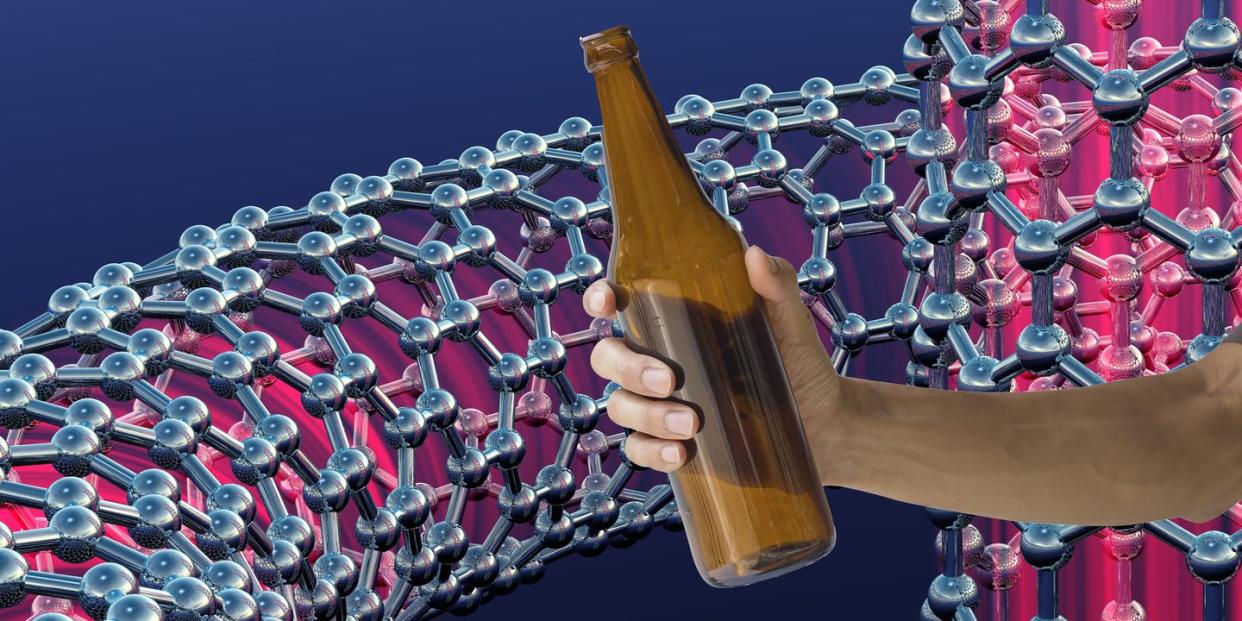Scientist Turns Beer Byproducts Into Carbon Nanotubes

Scientists have turned leftover barley into carbon nanotubes using a simple heat and chemical wash.
Carbon nanotubes are essential to research in many fields, and scientists can make them from recycled waste products.
• The process also produces activated carbon, vital to treating poison and filtering water.
Move over, Marmite—there’s a new brewery leftover in town. Scientists in Ireland and Oman have collaborated to turn barley waste into plentiful, low-cost carbon in high-value formats as activated carbon and carbon nanotubes.
Lead scientist Ahmed Osman says the U.K. typically pays to import materials to make both activated carbon and carbon nanotubes from overseas. The savings are double-double: Recycling waste into valuable things saves a ton of energy and money, and making these materials domestically instead of importing them also saves a ton of energy and money.
Osman, from the School of Chemistry and Chemical Engineering at Queen’s University Belfast, is part of a university-wide push to study and revolutionize biofuels. For this experiment, he took one kilogram of brewer’s barley, dried it thoroughly, and ran it through “a two-stage chemical and heat process”: first with phosphoric acid and second with potassium hydroxide. What’s left is “enough activated carbon to spread across 100 football pitches,” the press release explains, and a significant amount of carbon nanotubes. But what are those?
Carbon nanotubes are special and, yes, tubular molecules that have tons of cutting-edge applications, like drug delivery and targeted cancer treatment, but also consumer electronics and even 5G antennae. The molecules form during various chemical reactions and exist in single-layer and multilayer versions that are useful in different ways. They can “grow” from liquefied petroleum gas and even newspapers, but scientists are still searching for the golden ticket: a predictable and plentiful way to grow a lot more carbon nanotubes.
While carbon nanotubes may be the headliner here, activated carbon is no second fiddle. It’s widely used to treat cases of poisoning, whether from cyanide or a drug overdose. Your Brita pitcher and most other water filtration systems run on activated carbon because it’s such a great sponge for toxins. Since this carbon is recaptured from what would otherwise be waste, it can also just be used in everyday consumer products that don’t even require activated carbon in particular.
Transporting carbon sources from overseas is inefficient and costs a lot. “If we are able to take something that would otherwise be a waste and turn it into a useful biofuel, it can only be a good thing for our planet,” Osman said in the press release.
The scale of waste grain in breweries is staggering. Breweries in the EU chuck around 3.4 million tons of unspent grain—the weight of a half million elephants—every year, according to the press release. Osman’s experimental process used just one kilogram of that grain to begin with, and the low cost of the chemicals required means it can likely scale up. Imagine if solar extreme heat or hydrogen blast furnace technology could open up a way for the heat treatment to be emissions-neutral as well, further closing the energy efficiency loop.
“The synthesis of value-added products from barley waste is a prime example of the circular economy, by taking a waste food by-products and creating a high-value product,” Osman said in the press release. There will likely always be agricultural waste, and turning this into both fuel and vital carbon nanotubes could create new jobs and industries around the world.
You Might Also Like

